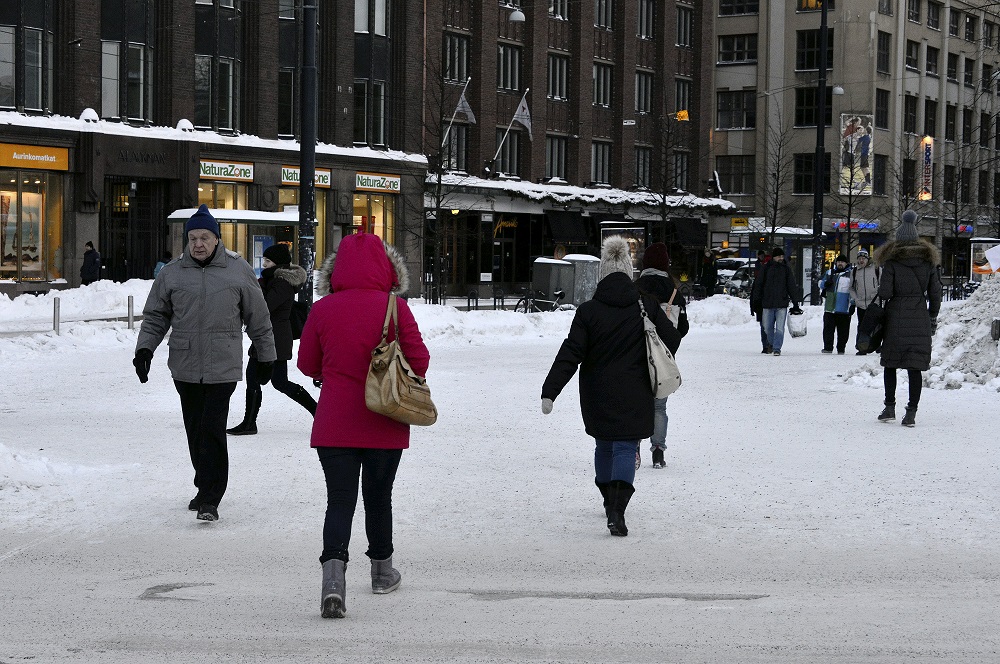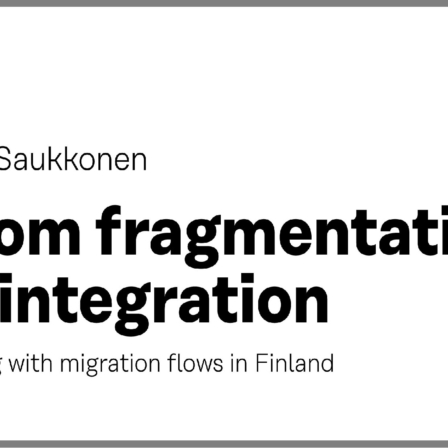The Finnish integration policy has received much credit in international comparisons. Nevertheless, everything might not be as fine as it seems at the first glance, writes Professor Pasi Saukkonen.
When immigration to Finland started to grow in the early 1990s, public authorities soon recognized the need for action. The first law related to integration services and their organization came into force in 1999. Since then, the number of those with a foreign background has been steadily rising, and in 2015 Finland received more than 30,000 asylum applicants.
Available statistics and research indicate that the integration of immigrants to Finnish society has varied a lot between different groups. Those with a refugee background have often had difficulties in entering the labour market. Women arriving from non-western countries also often stay long outside the labour force. The situation is relatively similar in all Nordic countries that have a compressed wage structure and high demands of professional and language skills.
A worrying feature in the current situation is that the so called second generation that consists of people born in Finland with a foreign background seem to face problems in many areas of life. At school, for example, they often do better than those that migrated themselves but much weaker than those with a native background. We can expect challenges as these youngsters soon start seeking for their place in education and in the labour force on a large scale.
The third thing worth mentioning is that while the Finnish society is getting ethnically and culturally more diverse, there is much reluctance among native Finns to accept these multicultural realities. Nationalist nostalgia and even overt xenophobia have been on a rise in Finland as in many other parts of Europe. It is yet another challenge for the native populations and mainstream societal institutions to integrate into new circumstances.
Is Finnish integration policy helping us?
The Finnish integration policy has received much credit in international comparisons. In the latest Migrant Integration Policy Index (MIPEX 2015), Finland’s total score ranked it fourth. Nevertheless, everything might not be as fine as it seems at the first glance.
For example, the Finnish system of immigrant integration has been criticized for having a very complicated organisational structure that hampers efficient implementation. Local authorities are also relatively free to decide how they organise decision-making, administration and service production in the municipality, and therefore there are almost as many ways to deal with immigrant integration as there are municipalities. As a result, the overall co-ordination of the policy is problematic and it is difficult to create a general overview of the policy. A serious problem has already for a long time been that there have not been enough resources. Integration education and training have particularly suffered from the lack of financial means. Integration education paths have also lacked coherence, clear objectives and proper attachment to existing labour market needs. Newcomers outside the labour force but in need of integration activities, such as housewives, have not been reached as well as intended. After returning to the labour force, they have usually not been no more entitled to integration services.
Finally, it has been difficult to get reliable data on the main instruments of immigrant integration such as initial assessments, integration plans, integration education and local integration programmes. The lack of data regarding integration measures makes it difficult to analyse the causal mechanisms between policy implementation and policy outcome. Knowledge about these causal mechanisms is essential for responding the challenges in the present and in the future. With proper action, our problems can still be turned into solutions.
—
Find out more analysis on Finnish integration and migration policies on Pasi Saukkonen’s paper From fragmentation to integration – Dealing with migration flows in Finland published today.
Publication:
Pasi Saukkonen
Senior Researcher, Adjunct Professor
From fragmentation to integration
Dealing with migration flows in Finland
2016
ISBN 978-951-563-980-6 (PDF) www.sitra.fi




Recommended